
Go Green: Make Your Yard More Eco-Friendly with These Tips
Published: 07/09/2024 | Updated: 02/09/2024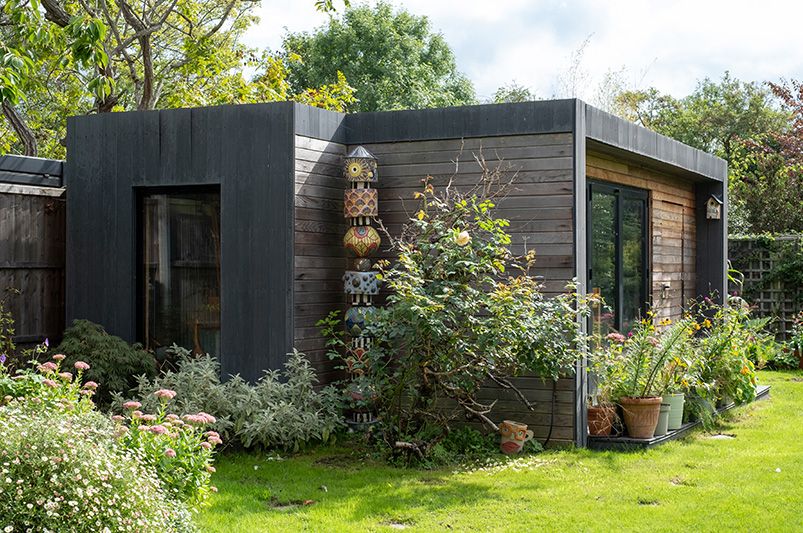
Key Highlights
- Embrace sustainable gardening practices for a greener yard.
- Attract local wildlife with native plants and pollinator-friendly choices.
- Conserve water through rainwater harvesting and efficient irrigation methods.
- Reduce your carbon footprint with solar lighting and electric lawn care tools.
- Choose organic mulches and natural pest control to minimize chemical use.
Introduction
In a world where climate change affects us more and more, it is very important to use sustainable gardening practices. Changing your yard into an eco-friendly space can help the environment. It also makes your outdoor area look nicer and work better. When you choose to support the local ecosystem, you help make the planet healthier. At the same time, you create a special place for yourself and local wildlife.


Tips for a Successful Eco-Friendly Yard Makeover
Creating an eco-friendly yard means making choices that help the environment and support sustainability. It involves making your outdoor space work well with nature and using gentle methods. From picking the right plants to managing water and resources, each step you take toward an eco-friendly yard is important.
Changing your yard to be more eco-friendly doesn’t need to feel like too much. You can make changes slowly and turn your outdoor area into a sustainable space. Begin by looking at what you do now and find ways to make green changes.
1. Choosing Native Plants for Sustainability
Native plants are key to a green yard. They support the local ecosystem and help the environment. These plants are used to the climate and soil in your area. Because of this, they need less water, fertilizer, and care than non-native plants.
In addition, native plants bring in local wildlife. They give food and homes to helpful insects, birds, and other animals. By adding several types of native plants, you can make a lively ecosystem in your backyard. This will boost biodiversity and help keep nature in balance.
Make sure to pick a variety of native plants that bloom during different times of the year. This way, you will have a steady food source for pollinators. Plus, it will add beauty to your yard through each season.
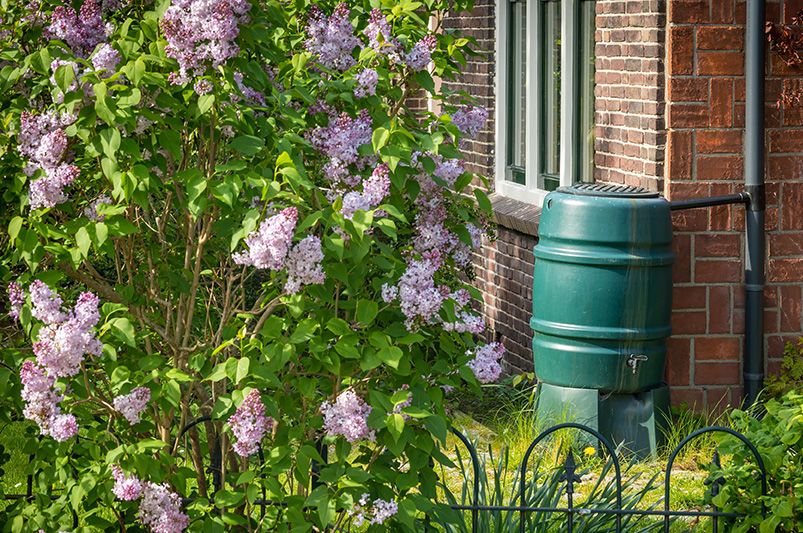
2. Implementing a Rainwater Collection System
Water conservation is very important for sustainable gardening. A rainwater collection system is a great way to cut back on using city water. You can set up a rain barrel under your downspout to catch rainwater from your roof. You can use this water to water your plants, clean your gardening tools, or flush your toilet.
Harvesting rainwater helps save water and lessens stormwater runoff. Stormwater runoff can carry harmful things into local water bodies. By using rainwater, you can lessen your impact on the environment. It also gives you a steady supply of water for your garden, even during dry times.
You might think about linking several rain barrels to store more water. If your roof area is big or you need a lot of water, you could choose a larger rain tank.
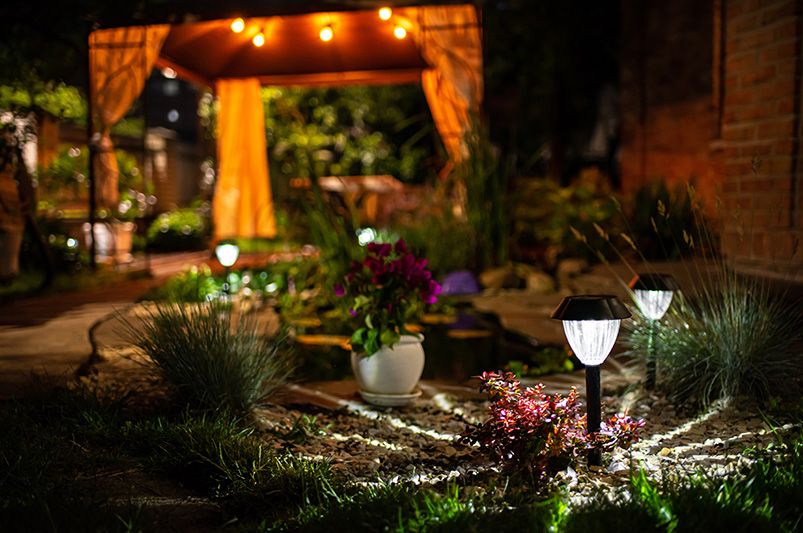
3. Transitioning to Solar Garden Lighting
Outdoor lighting adds beauty to your yard and keeps it safe. However, regular electric lights use energy and increase your carbon footprint. Switching to solar garden lights is a good choice that uses the sun's energy to light up your outdoor area.
Solar lights take in sunlight during the day and change it into electricity, which they store in a battery. When night falls, the lights turn on by themselves, giving you light without any wires or using electricity from the grid. This helps lower your energy bills and reduces your impact on the planet.
You can find solar lights in many styles and designs. This means you can pick lights that fit the look of your space. Whether you want pathway lights, spotlights, or string lights, solar lighting is a flexible and eco-friendly way to light up your yard.
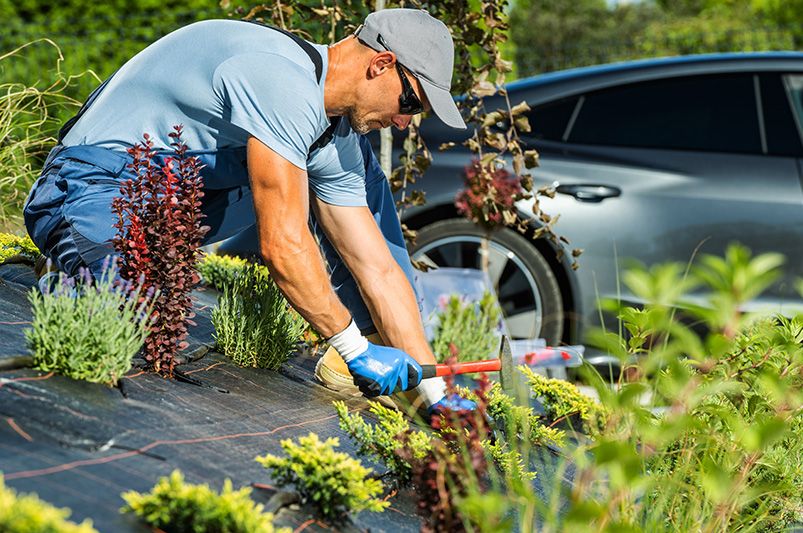
4. Installing Drip Irrigation for Efficient Water Use
Efficient watering is vital for saving water and keeping your garden healthy. Sprinklers can waste water because of overspray and evaporation. On the other hand, drip irrigation systems send water right to the root zone of your plants. This method uses less water and works better.
Drip irrigation systems have tubes or hoses with small emitters near each plant. Water drips slowly from the emitters. This keeps the soil moist but not too wet. It helps reduce water usage and encourages healthier plants. A drier surface can stop fungal diseases that wet leaves can cause.
You can also make drip irrigation systems automatic by using a timer. This way, you can set the watering times based on what your plants need and the local weather.
5. Opting for Organic Mulches
Mulching is a great gardening method. It means putting a layer of material on the soil around your plants. This practice has many benefits. It helps reduce weeds, keep moisture, control soil temperature, and add organic matter to the soil.
There are different types of mulch, but using organic mulch is the best choice for the environment. Organic mulches come from natural sources like wood chips, shredded bark, straw, leaves, or grass clippings. When these materials break down, they make the soil better. They help with soil structure, fertility, and drainage. This creates a healthier space for your plants to grow.
Organic mulches also help get rid of weeds. They do this by blocking sunlight and stopping weed seeds from sprouting.
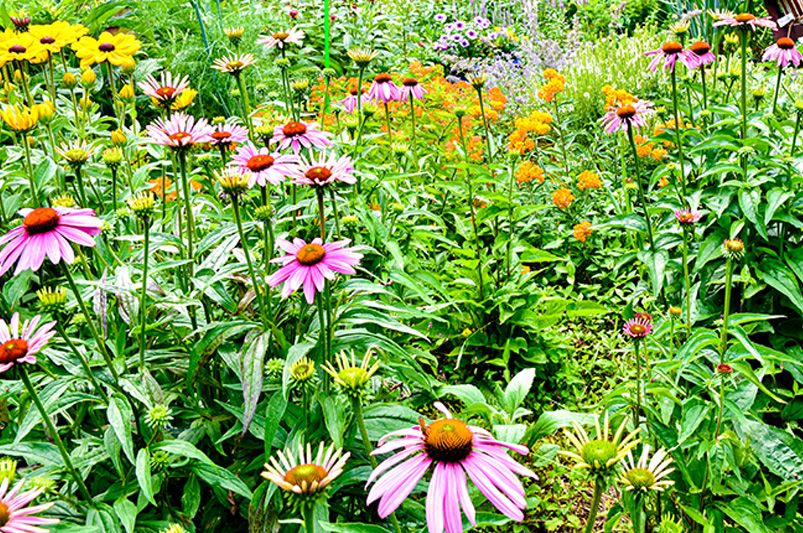
6. Creating a Pollinator-Friendly Environment
Pollinators like bees, butterflies, hummingbirds, and bats are very important for our ecosystem. They help plants reproduce. Sadly, their numbers have been going down in recent years. This happens because of habitat loss, the use of pesticides, and climate change. As gardeners, we can help by making gardens safe for these vital creatures.
To attract pollinators, we need to give them food, water, and shelter. Plant a variety of flowering plants that bloom at different times. This way, they can always find nectar and pollen. Select flowers in many shapes, sizes, and colors to bring in different types of pollinators.
Do not use pesticides, because they can harm these important animals. Instead, use natural methods to keep pests away. Also, make sure to provide water sources, like shallow dishes filled with water and pebbles, so pollinators can land safely.
7. Embracing Permaculture Principles
Permaculture is a way to design that focuses on working with nature. It helps create systems that are sustainable and self-sufficient. If you use permaculture ideas in your yard, you can make a beautiful and eco-friendly outdoor space. This space will copy the patterns and relationships found in nature.
One key idea in permaculture is "observe and interact." This means gardeners should watch and learn about their yard's conditions. They should look at things like how much sun the area gets, the wind patterns, and the soil type. This knowledge helps them make smart design choices. When you know your yard's unique traits, you can choose plants that will grow well there. This can lower the need for extra water and fertilizers.
Another important idea is "catch and store energy." This principle is about using renewable resources as much as possible. This includes rainwater, sunlight, and wind effectively.
8. Using Eco-Friendly Outdoor Furniture
Choosing eco-friendly outdoor furniture is a great way to make your yard more sustainable. When picking furniture, think about the materials and how they affect the environment. Look for furniture made from sustainable materials like reclaimed wood, bamboo, or recycled plastic.
Reclaimed wood is a great choice because it uses wood from old buildings or fallen trees. This helps cut down the need for new timber. Bamboo grows quickly and is strong and durable, making it perfect for outdoor use.
Recycled plastic furniture is also a smart option. It keeps plastic waste out of landfills and gives it a new life. These materials are strong, weather-resistant, and have a smaller impact on the environment compared to regular furniture materials.
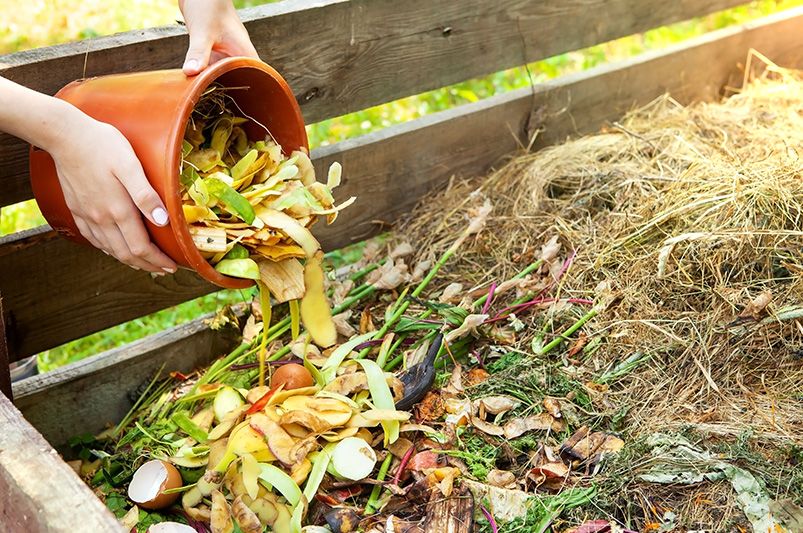
9. Setting Up a Composting System
Composting is a natural way to change organic waste, like food scraps and yard waste, into healthy soil called compost. By starting a composting system in your yard, you can cut down on the waste sent to landfills. Plus, you will create a helpful resource for your garden.
Composting is an easy process. It means gathering organic materials, such as fruit and vegetable scraps, coffee grounds, eggshells, leaves, grass clippings, and small twigs, in a compost bin or a pile. Over time, microorganisms break down these materials, turning them into nutrient-rich compost.
To start composting, pick a good spot in your yard. The place should drain well and be partly shady. You can buy a compost bin or make your own using pallets, wire mesh, or just a simple pile.
10. Applying Natural Pest Control Methods
Pests are a normal part of gardening. However, using chemical pesticides can hurt helpful insects, harm the environment, and may be dangerous to human health. Luckily, there are many natural ways to control pests without harmful chemicals.
One way is to create a variety of plants in your yard. This variety can attract helpful insects like ladybugs, lacewings, and praying mantises. These insects can naturally reduce the number of garden pests by acting as predators.
Another good method is companion planting. This means planting different types of plants together that can help each other grow.
Enhancing Your Yard's Eco-Friendliness Through Design
Designing an eco-friendly yard means looking at the whole space, not just single parts. It’s important to think about how everything works together. By using eco-friendly design ideas, you can make a yard that is nice to look at and works well with nature. You should consider ways to handle rainwater, use solar energy wisely, and create a place that helps both wildlife and your family's needs.
Picture a yard where rainwater helps your plants grow, paths are made from materials that let water through, and you can grow food all year round. By adding these ideas, your yard can become a great example of sustainable living.
11. Incorporating Edible Landscaping
Edible landscaping is becoming popular. It mixes pretty plants with food plants. When you add edible plants to your landscape design, you can grow your own food and also make your yard look nice and full of life.
Instead of just putting fruits, vegetables, and herbs in traditional garden beds, think about putting them in your flower beds, borders, or even containers. Fruit trees can give you shade and look nice while growing tasty fruit. You can also plant herbs in sunny spots or in pots on your patio.
Not only does edible landscaping help you have fresh, homegrown food, but it also lowers your carbon footprint. It cuts down your need for store-bought food that often comes from far away.
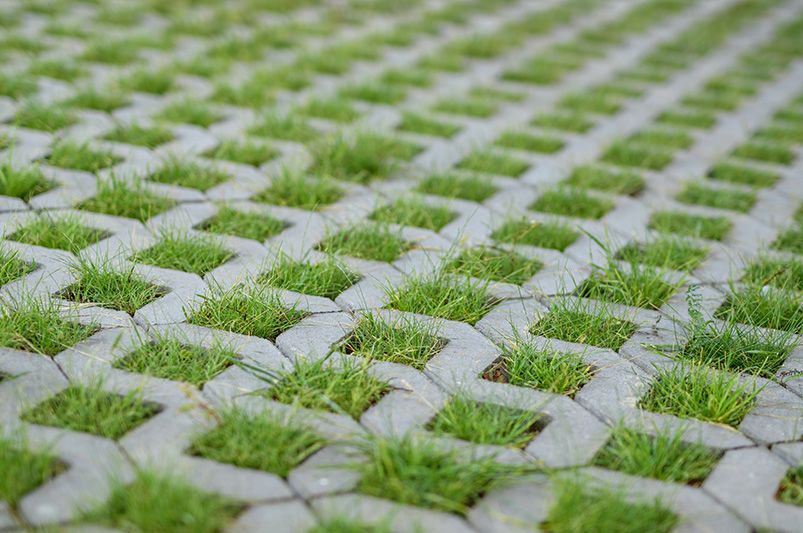
12. Designing with Permeable Paving Materials
Traditional concrete and asphalt surfaces are impermeable, meaning they prevent water from seeping into the ground. This can lead to issues such as stormwater runoff, flooding, and soil erosion. By choosing permeable paving materials, you can create a more sustainable and eco-friendly landscape design.
Permeable paving materials allow rainwater and irrigation water to infiltrate the ground, reducing stormwater runoff and replenishing groundwater supplies. This helps to prevent flooding and erosion while also filtering out pollutants before they reach waterways.
Here are some popular permeable paving options:
|
Material |
Description |
|
Permeable pavers |
Interlocking concrete pavers with spaces between them that allow water to pass through |
|
Gravel |
Loose aggregate that provides excellent drainage |
|
Porous asphalt |
Asphalt with a porous structure that allows water infiltration |
13. Establishing a No-Mow Grass Area
Maintaining a traditional grass lawn can take a lot of water and time. It often needs fertilizers and pesticides, too. A good option is to create a no-mow grass area. This is also called a low-maintenance lawn or meadow lawn. It is good for the environment and helps create a more natural home for wildlife.
No-mow grasses usually grow slowly and need to be mowed less often. This means less noise and air pollution, and they also help reduce your carbon footprint. These grasses are better at surviving dry conditions, which means you don't have to water them as much.
To set up a no-mow grass area, pick a grass seed mix made for low-maintenance lawns. These mixes often have fine fescues, which stay low to the ground and are durable in dryness.
14. Adding Vertical Gardens to Save Space
Vertical gardens are a smart and space-saving choice for small yards or city areas where ground space is short. These gardens let you grow plants on walls, fences, or other structures. This helps make good use of space while also creating a beautiful look.
Vertical gardens have many benefits. They can make the air cleaner, cool down urban heat, and boost biodiversity. They also help insulate buildings, which can lower energy use for heating and cooling.
You can create vertical gardens in different ways. You might use ready-made vertical gardening systems or make your own using pallets, gutters, or hanging planters. Choose plants that grow well upward, like trailing plants, succulents, herbs, and ferns.
Maintaining Your Eco-Friendly Yard
Maintaining an eco-friendly yard means keeping up the sustainable habits you’ve started. It also involves paying attention to your yard's changing needs and adjusting when needed. Eco-friendly maintenance works with nature to help your yard stay healthy and full of different plants and creatures. It also aims to reduce your effect on the environment.
Check your plants regularly for pests or signs of disease. If you notice problems, try to solve them quickly using organic methods. Make your soil better by adding compost to promote its health. Water your plants deeply but not too often to help their roots grow strong.
15. Choosing Hand Tools Over Gas-Powered
When you think about yard care, choosing hand tools instead of gas-powered ones is a simple way to lower your carbon footprint. Gas-powered tools release bad pollutants that harm the air and add to climate change.
Hand tools rely on human energy. This makes them clean and a good option for the environment. They are also quieter, which helps cut down noise in your area. Tools such as rakes, shovels, hand pruners, and push mowers are great for the planet. They also give you a good workout.
If your yard is bigger or if you find hand tools too hard to use for some jobs, you might think about electric tools as a good middle option.
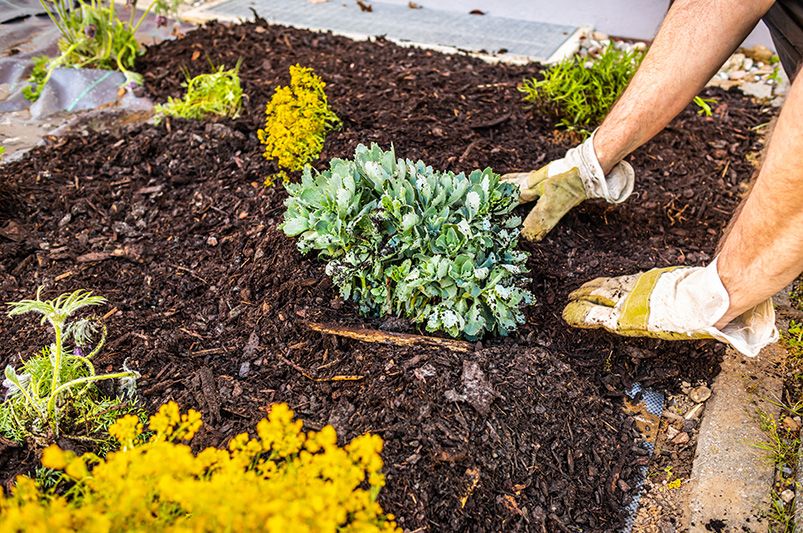
16. Mulching to Improve Soil Health
Mulching is important for keeping a garden healthy and sustainable. When you spread a layer of organic mulch around your plants, you make a shield that helps your soil in many ways. Organic mulches like wood chips, shredded bark, or compost break down slowly. They release nutrients into the soil and improve its texture.
Mulch also acts as a natural insulator. It helps control soil temperature and protects plant roots from too much heat or cold. It keeps moisture in the soil, which means you won't need to water your plants as often. Plus, mulch prevents weed growth by blocking sunlight and stopping weed seeds from sprouting.
Conclusion
In conclusion, using eco-friendly practices in your yard helps the environment and makes your outdoor space more beautiful and sustainable. By adding native plants, rainwater collection systems, solar lights, and other green solutions, you can create a natural ecosystem. Making small changes like composting, using organic mulches, and using natural pest control can greatly reduce your carbon footprint. Think about permaculture and sustainable design to change your yard into a green paradise. You can enjoy it while also helping the planet.
Frequently Asked Questions
What Are the First Steps in Making My Yard Eco-Friendly?
Start by adding native plants to your yard. Then, set up a rain barrel to collect water. You can also create a compost pile for recycling waste. Think about using solar panels to save energy. Finally, spread organic mulch around your garden beds.
How Can I Conserve Water in My Eco-Friendly Yard?
- Use rainwater collection systems along with drip irrigation.
- Choose plants that need less water for your landscaping.
- Mulching can keep soil moist and reduce water usage.
Are There Eco-Friendly Options for Weed Control?
Natural ways to control weeds are to use organic mulch, plant ground cover, and pull out weeds by hand. Eco-friendly herbicides can be used if needed.
Looking for assistance with your yard makeover?
At ShrubHub, we specialize in creating custom outdoor spaces that fit your lifestyle and preferences. If you’re considering adding a putting green to your backyard, our expert team is here to help you every step of the way, from design to installation. We offer a wide range of services, including 3D custom landscape designs that bring your vision to life and a variety of high-quality materials to ensure your putting green is built to last.


